This site uses only a few technical cookies necessary for its operation. By continuing to browse, you accept their use.
To find out more...
To find out more...
Circles vs. moulds tins
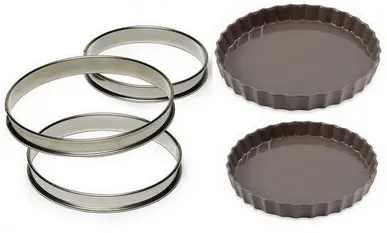
If you like to bake or make quiches, pies etc. you must surely have one or more pie pans at home, in different diameters and perhaps materials.
They are indispensable, without them there is no way to make beautiful pies, and they work very well, but you have another option, instead of moulds, that is pie rings.
They are indispensable, without them there is no way to make beautiful pies, and they work very well, but you have another option, instead of moulds, that is pie rings.
16 K 5/5 (15 reviews)
Keywords for this post:PiesTartsCircleMouldsTipsLast modified on: October 2nd 2020
Circles vs. moulds tins
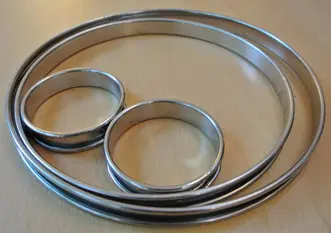
As their name indicates, the circles are simple circles, made of stainless steel, which exist in different diameters, but unlike a mould, a circle has no bottom (yes, this is not an extraordinary statement) so it must be placed on a baking sheet, protected by a sheet of baking paper, or silicone (silpat), before baking.
Before continuing, just 2 words of baker's vocabulary :
-"rolled-out pastry": Piece of dough that is rolled out and used to line a mould/circle
-"line (with pastry)": Action of lining a mould/circle with an abaisse
So on one side we have the classic pie tin, which you put in the oven directly or on a baking sheet, and on the other side the circle, which must be placed on a baking sheet.
Which is better?
The circle has many advantages:- The baking is better, more regular and faster because of the absence of a bottom, more direct contact of the pastry with the heat
- Unmoulding is very easy, you just have to remove the circle from the top and then slide the tart into its serving dish (breaking a tart when taking it out of its mould is a very very frustrating moment!)
- It is very easy to clean, dishwasher safe
- If you go for it carefully, you'll get very elegant and professional right-angled pie edges
- It costs less than a mould
As you can see, it's almost all advantages, that's why pro pastry chefs all use circles, and you can do the same at home.
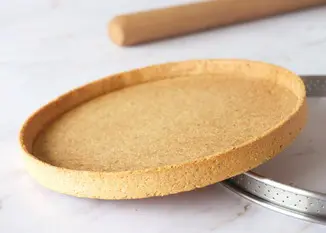
There is only one case, where the mould is preferable, and that is if you are making a quiche, or a tart with a lot of cooking juice, like a tomato tart, or a fresh plum or blackberry tart for example, in these cases having a mould (rather than a circle) that will retain the cooking juice even if you have a leak in your pastry case is very appreciable.
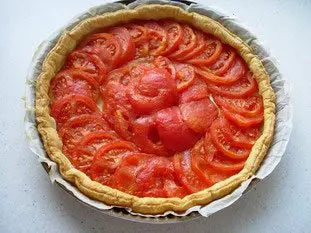
I didn't go into detail, but as for the moulds, there are circles for tarts, of all sizes in fact, and square or rectangular shapes, the pastry cooks speak then rather of "frames".
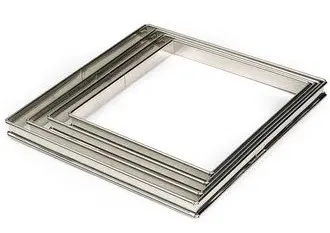
Another quite recent option, the circles are said to be micro-perforated, i.e. pierced with hundreds of small holes that improve the baking process by distributing the heat better.
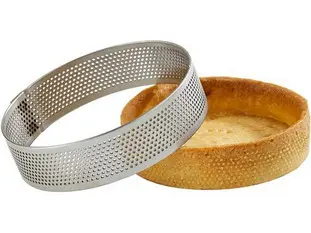
As always for the material, do not hesitate to put the price, it is an investment on the duration, and to go to provide you in the stores for professionals rather than in the ray kitchen of the great surfaces.
To sum up: Try the circles instead of the pie tins, once you get the hang of it, you will appreciate the difference.
Lasts posts
Butter vs. grease
We often read in a recipe where a pastry is put into a mould that, just before pouring, the mould should be buttered or greased. But what's the difference between these 2 terms?December 1st 20259585
Getting out of the fridge early
Very often when you're cooking, you need to take food or preparations out of the fridge, to use them in the recipe in progress. There's nothing tricky about this: you just take them out of the fridge and use them, usually immediately, in the recipe. But is this really a good method?November 24th 20251,0895
Who's making the croissants?
When you look at a bakery from the outside, you naturally think that in the bakery, the bakers make the bread, and in the laboratory, the pastry chefs make the cakes. It's very often like that, with each of these professions having quite different ways of working, but sometimes there's also one...November 23th 2025984
Oven height
When we put a dish or cake in the oven, we naturally tend to put it on the middle shelf, and that's what we usually do. But in some cases, this position and height can be a little tricky, so let's find out why.October 8th 20252,6925
The importance of sieving
In recipes that use a fine powder (flour, powdered sugar, etc.), you'll often see the advice to sift before using it. To sift is to pass the powder in question through a sieve (a very fine strainer) before incorporating it into your recipe. It's often advice, but is it really useful?September 3rd 20257,5133
Other pages you may also like
What is the difference between bakery and patisserie?
This is a question that you may well have asked yourself and which I will attempt to answer. In France the two trades of "boulangerie" (bakery) and "pâtisserie" (patisserie and confectionery) have always been quite distinct, but where exactly do the boundaries lie? .February 7th 2017134 K 14.1
Candied fruits: don't get ripped off
Do you like candied fruit? You might like to nibble a handful or add it to a recipe, like a classic fruit cake or delicious Italian specialities like panettone or sicilian epiphany pie.June 21th 201767 K 24.2
Cleaning endives
If you buy your endives elsewhere than in supermarkets, and in this case the best is of course from a market gardener, he or she is the one who planted and harvested them, in this case you will have endives full of earth or sand, depending on where they were grown, which is normal and reassuring, we...March 24th 202026 K4.6
Kitchen ovens
You certainly have one in your kitchen, an oven, the essential tool for all kinds of cooking, whether in the kitchen of course, but also in pastry, bakery, pizza, and many others. Here is some information on its structure and operation.May 16th 202034 K4.4
How to avoid lumps
You've probably come across this unpleasant phenomenon where, when you try to incorporate an ingredient (usually a solid or powder) into a preparation (usually a liquid), the mixture doesn't mix properly and you end up with little "balls" or little lumps of the solid part that refuse to mix with the...October 9th 202022 K4.8
Post a comment or question
Follow this page
If you are interested in this page, you can "follow" it, by entering your email address here. You will then receive a notification immediately each time the page is modified or a new comment is added. Please note that you will need to confirm this following.
Note: We'll never share your e-mail address with anyone else.
Alternatively: you can subscribe to the mailing list of cooling-ez.com , you will receive a e-mail for each new recipe published on the site.









